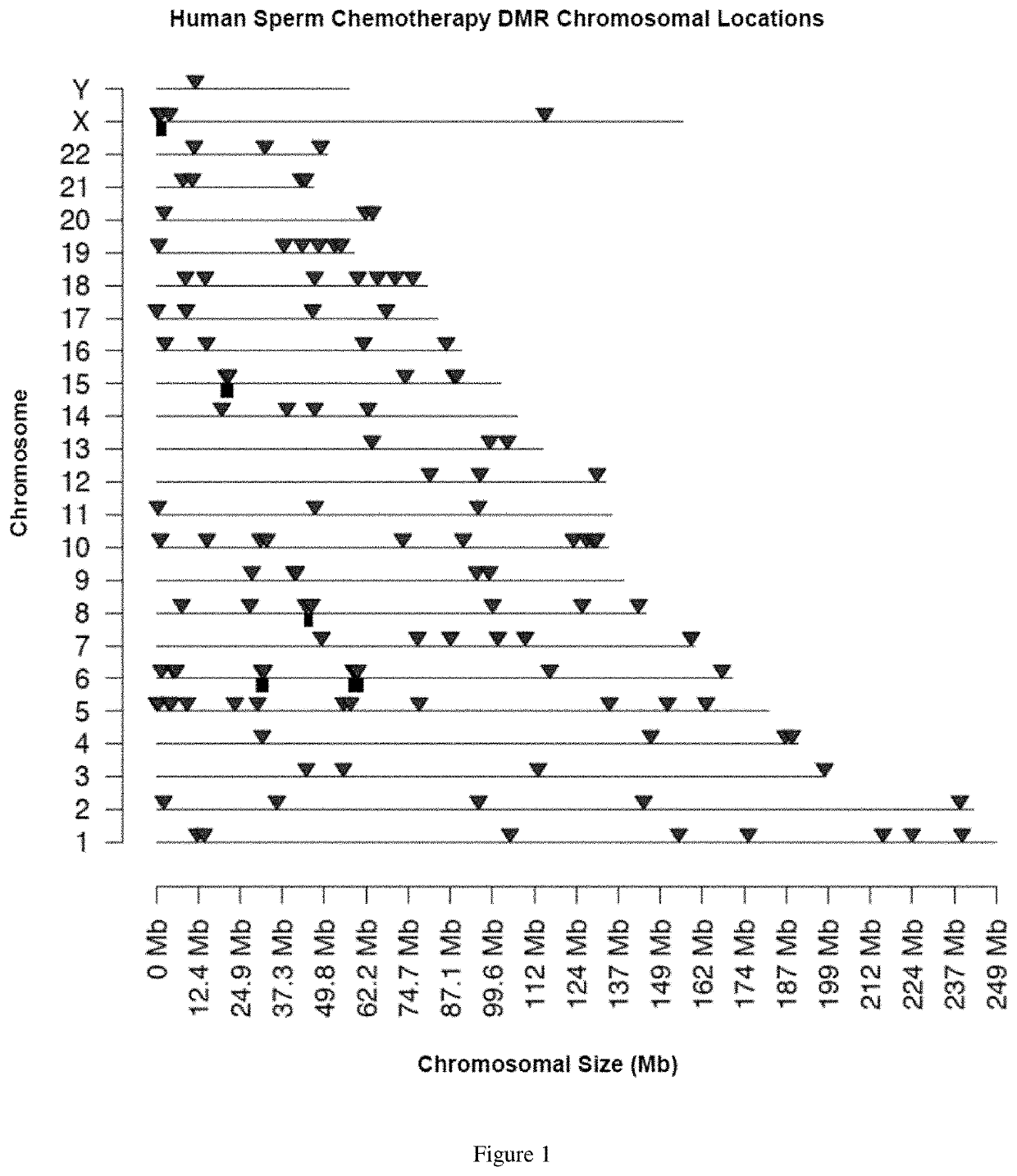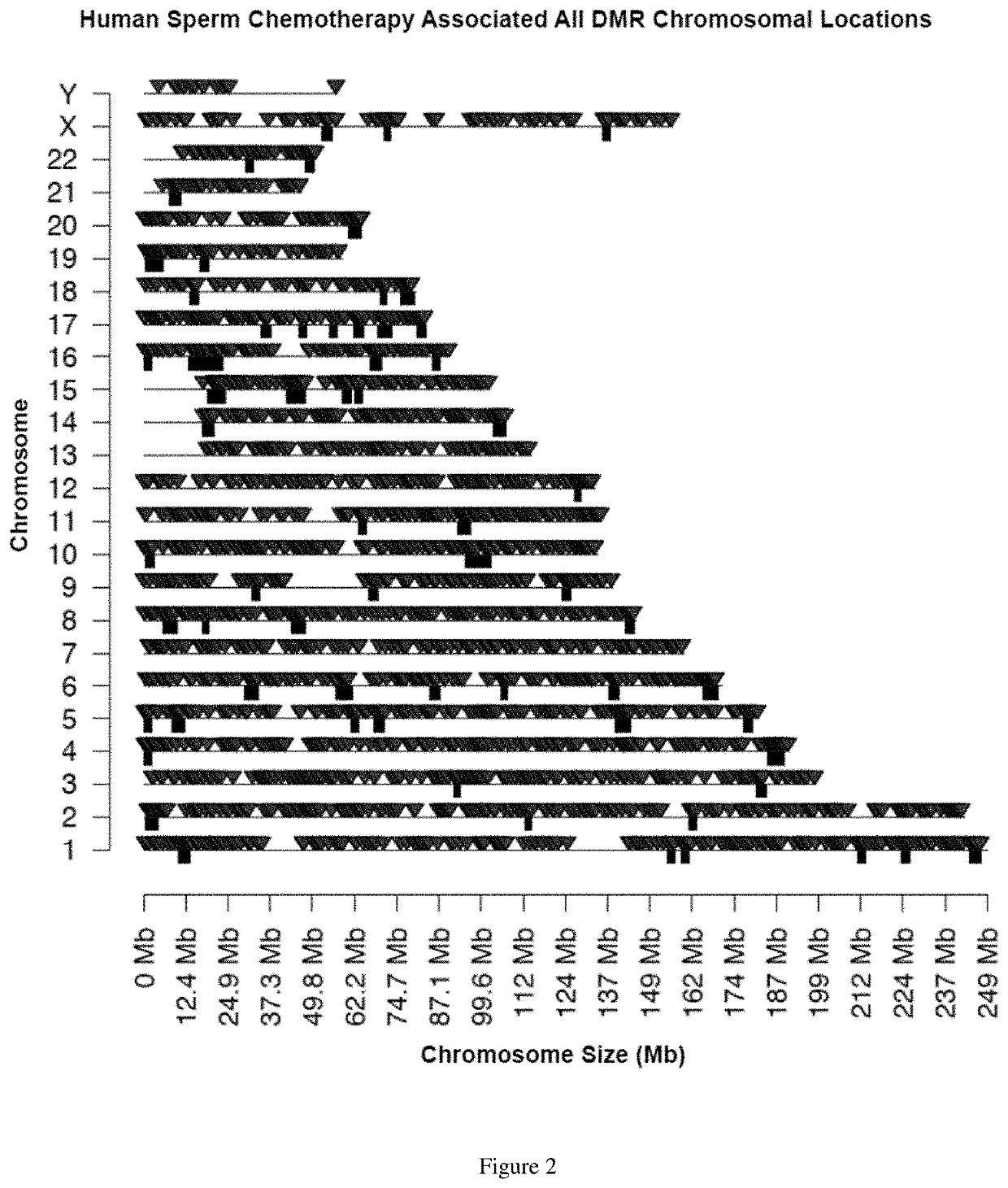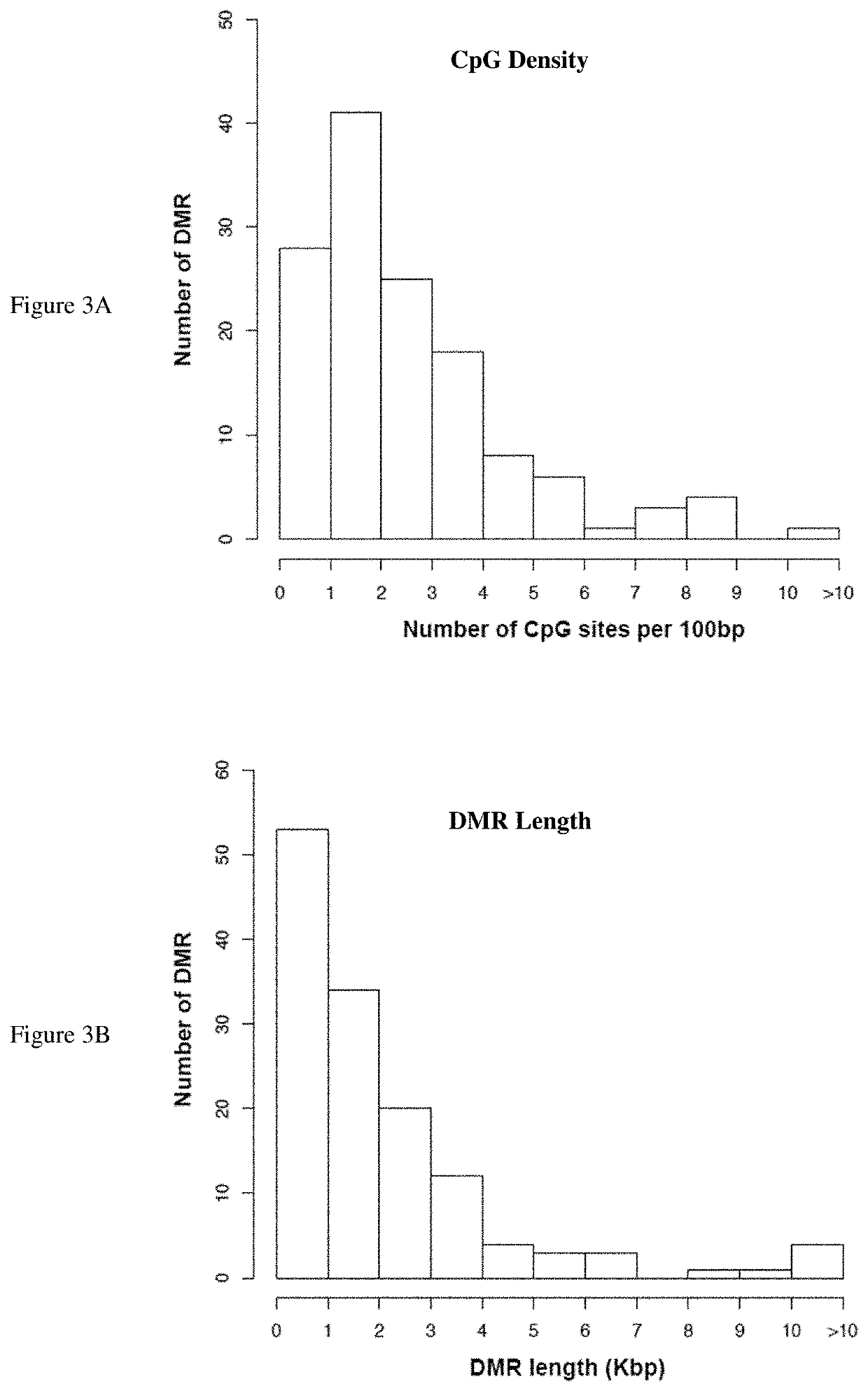Heritable epigenetic modifications as markers of chemotherapy exposure
a marker and epigenetic technology, applied in the field of epigenetic modification identification, can solve the problems of unfavorable treatment effect of female survivors, and inability to fully investigate the generational impact of chemotherapy
- Summary
- Abstract
- Description
- Claims
- Application Information
AI Technical Summary
Benefits of technology
Problems solved by technology
Method used
Image
Examples
Embodiment Construction
[0018]Epigenetic transgenerational inheritance provides an alternative molecular mechanism for germ line transmission of environmentally induced phenotypic change compared to that of classic genetics. Most factors do not have the ability to modify DNA sequence, but environmental factors such as nutrition or various toxicants can influence epigenetic processes to mediate alterations in genome activity. Environmental epigenetics focuses on how a cell or organism responds to environmental factors or insults to create altered phenotypes or disease. Until the present invention, it was previously unknown how chemotherapy or radiotherapy treatment affected the epigenetic programming of a germ line and whether such impact could influence later life fertility and epigenetic inheritance.
[0019]Described herein are the altered DNA methylation profiles in the germ line (sperm) of male subjects after exposure to chemotherapy agents. In particular, Table 6 provides statistically significant epimut...
PUM
| Property | Measurement | Unit |
|---|---|---|
| time | aaaaa | aaaaa |
| time | aaaaa | aaaaa |
| volume | aaaaa | aaaaa |
Abstract
Description
Claims
Application Information
 Login to View More
Login to View More - R&D
- Intellectual Property
- Life Sciences
- Materials
- Tech Scout
- Unparalleled Data Quality
- Higher Quality Content
- 60% Fewer Hallucinations
Browse by: Latest US Patents, China's latest patents, Technical Efficacy Thesaurus, Application Domain, Technology Topic, Popular Technical Reports.
© 2025 PatSnap. All rights reserved.Legal|Privacy policy|Modern Slavery Act Transparency Statement|Sitemap|About US| Contact US: help@patsnap.com



